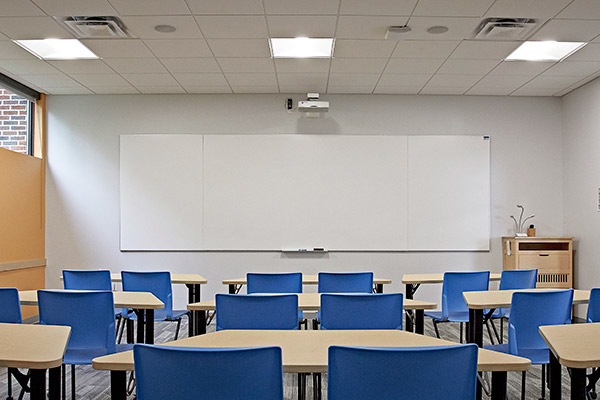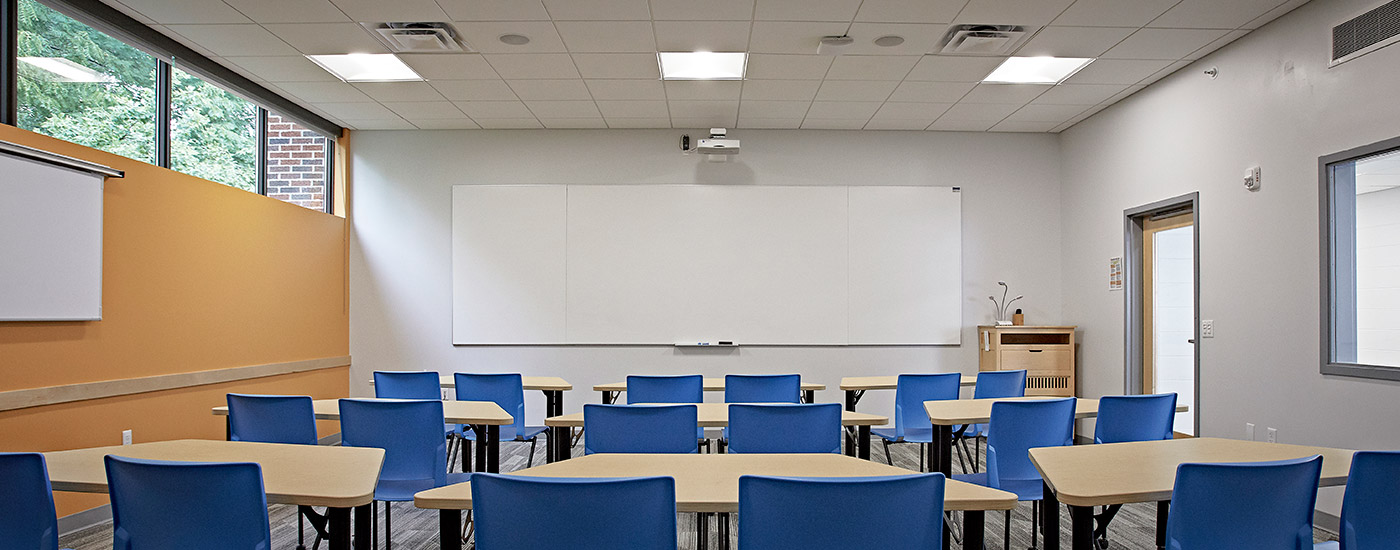Grace College Partners with Da-Lite to Enhance Interactive Learning
Challenge
When Grace College & Theological Seminary needed to replace their vintage Da-Lite projection screens, some of which were installed in the 1970s, remaining brand loyal was a natural choice according to Associate Director of IT, Network and Operations for Grace College, Jacob Barros. The college is located in Winona Lake, Indiana, only five miles from Da-Lite manufacturing headquarters in Warsaw, Indiana. “Da-Lite has a great reputation in the community,” said Barros. “They are our go-to brand for projection screens.”
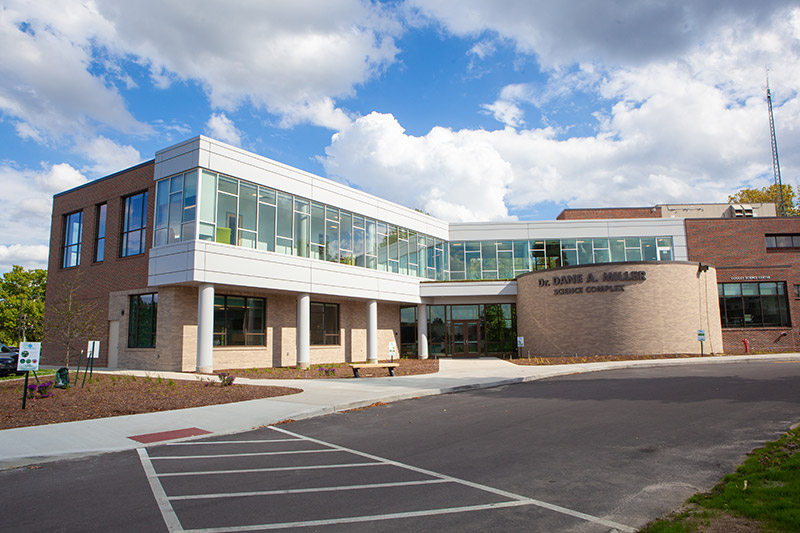
The Dr. Dane A. Miller Science Complex at Grace College
The recent AV technology upgrades at Grace College are thanks to the ASPIRE Campaign – a comprehensive, strategic plan to prepare students to serve in an ever-changing world. The campaign includes several new academic programs, facility enhancements and investments. Among those initiatives is the Dr. Dane A. Miller Science Complex.
The Science Complex is designed to provide students with a state-of-the-art environment that gives them the space and equipment they need to become world-class biologists, chemists, mathematicians and doctors. The project includes renovation of the existing 22,500-square-foot Cooley Science Center and a new addition of approximately 13,000 square feet.
Project objectives focused on creating interactive, open plan classrooms and labs with a glass corridor and lobby overlooking surrounding gardens and nature areas as well as a glass-walled conference room. Grace College needed innovative AV technology to seamlessly integrate into these modern, collaborative learning spaces.
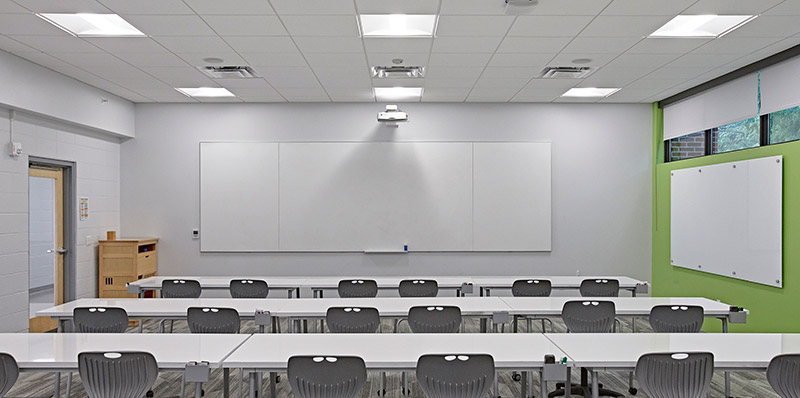
Da-Lite IDEA Panoramic screen in a math lab at Dr. Dane A. Miller Science Complex
Solution
That’s when Barros called AV integration consultants, ESCO Communications in nearby Fort Wayne, Indiana. ESCO worked closely with Da-Lite to deliver the newest projection screen technologies. They went above and beyond on the project, delivering and installing rush orders in August so the college would be fully equipped for the coming school year.
Collaboration spaces in chemistry and math labs are outfitted with Da-Lite IDEA™ and IDEA Panoramic Screens to maximize interactivity and student collaboration. Almost every surface in the math lab is designed to be written on, including tables and walls, so the IDEA Screens were a perfect fit.
“Instructors like to write on projected images, that was the main driver in selecting the IDEA Screens,” said Barros. He went on to explain that the college also prefers to use UST (ultra-short throw) laser projectors because they create clearer, brighter images than other older, lamp-based projectors.
The IDEA Screen is specifically designed to pair with UST projectors, guaranteeing hotspots are eliminated. Hotspots are when images appear brighter in the middle of the screen than at the sides, making the image difficult to see from various angles – a common occurrence when UST projectors are used with standard whiteboards, which aren’t designed for projection.
Barros has been working in higher education his entire career and learned the hard way that projecting onto traditional white boards is not a positive experience. “If you want a writable surface with interactive projection, there’s no comparison on the market to the IDEA Screens.”
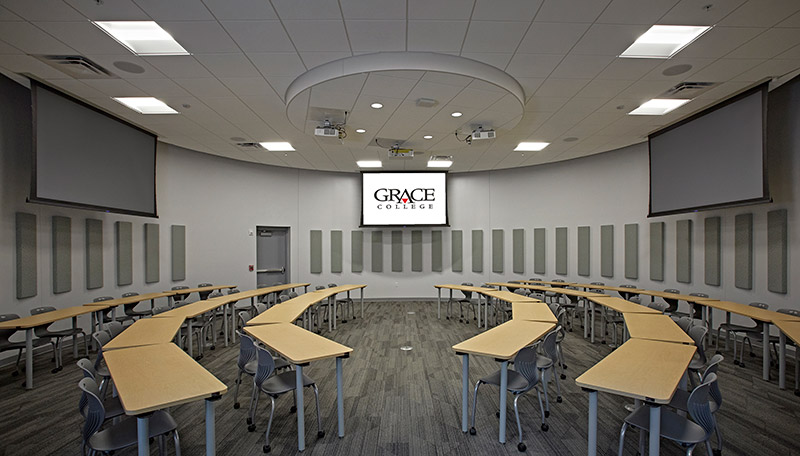
Three Da-Lite Tensioned Advantage Electrol screens featuring the Parallax Pure 0.8 surface at the Dr. Dane A. Miller Science Complex
give instructors and presenters the freedom to leave overhead lights on during lectures, keeping the audience focused and engaged.
Another Da-Lite technology Grace College embraced for the project is ambient light rejecting Parallax® Pure surfaces, installed on Tensioned Advantage® Electrol® screens in the new circular, 60-student classroom within the Science Complex. The intent of the circular room is to make the instructor or speaker the focal point; therefore, the strong LED lights used overhead are rarely dimmed during presentations. Ambient Light Rejection (ALR) projection surface technology prevents overhead lighting, as well as natural light from windows, from washing out projected images, preserving contrast and color saturation.
Barros noted that the college uses traditional, non-ALR projection screens in other areas and the difference is immediately apparent. Images are not as clear or bright, especially as facilities shift to using more LED lights. Instructors usually need to dim the lights during presentations in those rooms. Projector choice was again a factor when selecting the Parallax Pure surface. Most classrooms on campus use 5,000 lumen laser projectors. Parallax Pure is designed specifically for the high-resolution output of laser projection and to reject ambient light.
“Parallax makes the picture as clear as day, they’re really a blessing,” remarked Barros.
Results
The Dr. Dane A. Miller Science Complex project was the driver to upgrade the college’s AV systems, funded by the ASPIRE Campaign. Now, Grace College is using it as a model to specify the IDEA and Parallax projection surface technology into more newly built and renovated spaces on campus. The future looks bright for Grace College students.
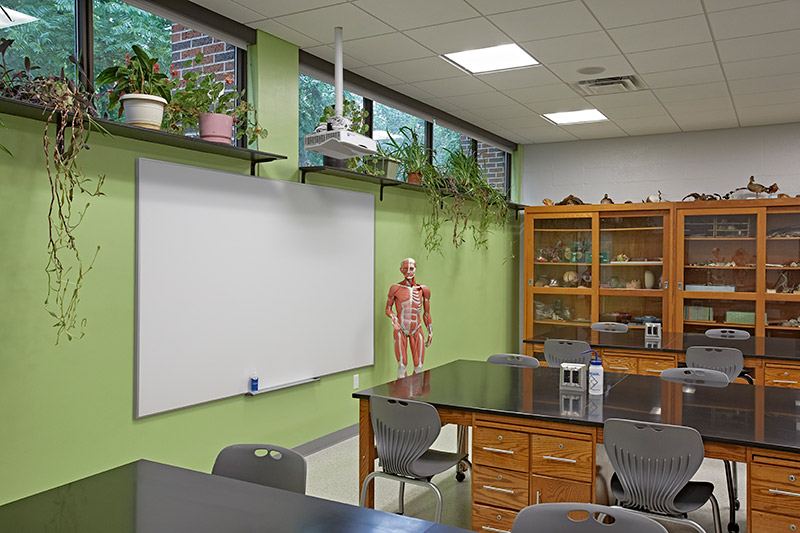
Da-Lite IDEA Screen in a biology lab at Dr. Dane A. Miller Science Complex
Download a pdf of this Case Study.
For more on AV and education, visit Legrand | AV's Education Solutions page, your one-stop-shop for resources from across the brands of Legrand | AV to help guide design and suggest solutions to enhance learning environments.Related Inspiration
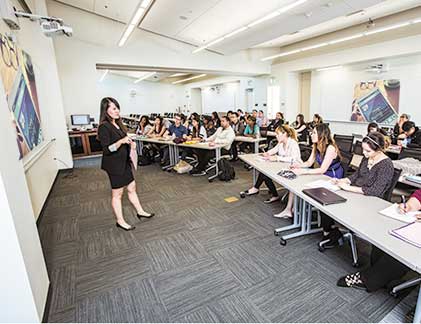 Da-Lite IDEA™ Panoramic screens help a hospitality management program add collaboration and interaction to the classroom.
Da-Lite IDEA™ Panoramic screens help a hospitality management program add collaboration and interaction to the classroom. 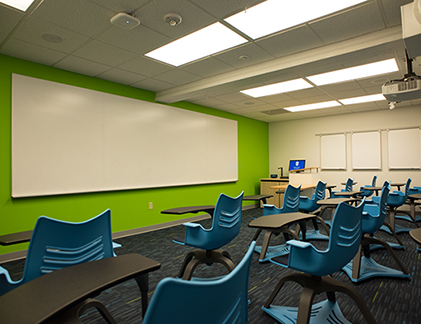 Idea screens allow universities to maximize whiteboard space with a dry erase projection surface.
Idea screens allow universities to maximize whiteboard space with a dry erase projection surface.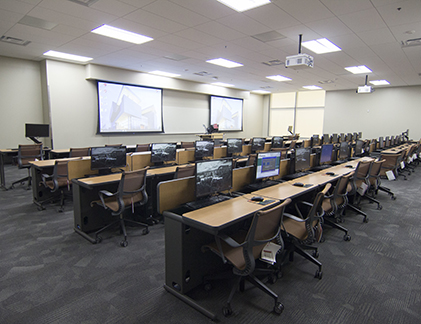 UNLV Hospitality Hall advances their students’ technology use with Legrand | AV brands.
UNLV Hospitality Hall advances their students’ technology use with Legrand | AV brands.

